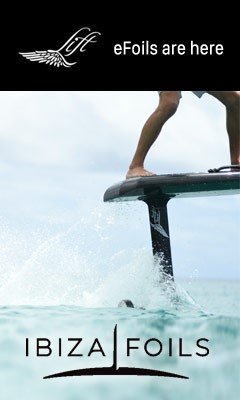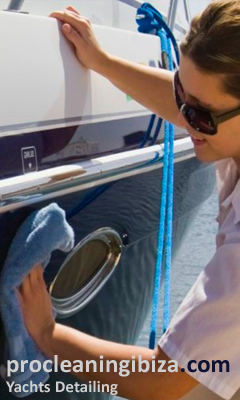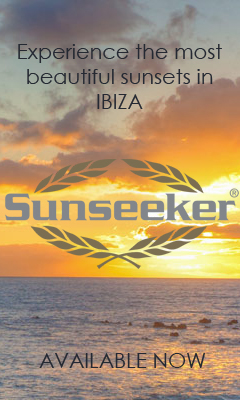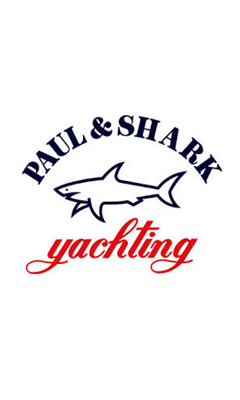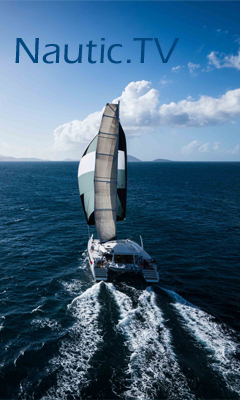ORC
| Brief history of the Offshore Racing Congress |
|
"It is the spirit and intent of the rule to promote the racing of seaworthy offshore racing yachts of various designs, types and construction on a fair and equitable basis."
Thus began the introduction of the IOR Rule. It was an ambitious aim. For over a century yachting authorities on both sides of the Atlantic had tried to devise a rule that fairly equated yachts of different sizes and speeds. Early Roots The ancestor of modern rules was the Seawanhaka Rule of 1883. This evolved into the Universal Rule of Nathaniel Herreshoff which was in use before the First World War but was known and used only in the US. Similar developments were going on in England and the Boat Racing Association Rule of 1912 showed strong similarities to the rule ultimately adopted for the Fastnet Race by the Ocean Racing Club in the late 1920’s. The International Rule, promulgated for the first time in 1907 by the newly formed IYRU was used at the times in Europe and Asia, and for the early Olympics at several level classes. The British used girth stations to determine length, while the American Rule used buttock length. In 1928 the Cruising Club of America used the British Rule with minor changes, but the use of this rule on both sides of the Atlantic was short-lived. In 1932 the CCA produced its own rule which tended to be type-forming, containing, as it did, a number of "base" dimensions, and penalties provided when differences from the base boat occurred. The measurement of stability was a novel thing in CCA promulgation. Post-War divergence When ocean racing resumed after the Second World War the rules tended to diverge, in that the CCA Rule was adapted from time to time to encourage owners to build the sort of dual-purpose cruiser/racer that the club thought desirable. The Royal Ocean Racing Club was less restrictive towards the development of the pure racing boat, such as "Myth of Malham." The CCA was adopted only in the US, while the RORC Rule had been adopted by many cruiser/racers. In the Med and a few other countries the RORC Rule was extended to smaller boats, and called the “C” Class. But the demand for a truly International racing rule really started when some trophies and events were created on both sided of the Atlantic that encouraged international team participation. These included the Onion Patch series and later the SORC in the US, where the CCA was used, and the Admiral's Cup, where the RORC rule was used. By 1961 it was clear that there were two very different rules, the RORC Rule for Europe and the Antipodes and the CCA Rule for North and South America. This situation was not to the liking of a number of European sailors who gathered in Bremen on 5 June 1961 at the suggestion of Rolf Schmidt of Germany. Later the same year delegates from four countries met in London and decided to form the Offshore Rules Coordinating Committee. This committee worked throughout the 1960’s and the original four countries (Germany, Great Britain, Sweden and the United States) were joined by Denmark, Norway, Finland, Holland, France, Italy, Australia, Canada and Belgium. The ORCC was chaired throughout by Buster de Guingand. The Committee concentrated on trying to align the two rules in matters that were not of fundamental importance, such as the details of sail measurement. Beginnings of an International Rule In 1965 there were rumors that the 1968 Olympic Games might include an offshore racing class and in 1966 the International Yacht Racing Union asked the RORC and the CCA to try to frame one international rule. Both clubs agreed, and at the April 1967 meeting of the ORCC an International Technical Committee was established. Olin Stephens was the chairman and the other American representative was the designer Dick Carter. Europe was represented by Gustav Plym of Sweden and Ricas van de Stadt of Holland, and Paul Spens from England. The English measurers David Fayle and Robin Glover completed the committee. Between April 1967 and November 1968 the committee met on a number of occasions and the ORCC considered the draft of a new International Offshore Rule at its November 1968 meeting in London. It was then unanimously agreed to recommend to all national authorities that the Rule should become operative in the 1969 season. The set of measurements and the formulae for the length, the depths and the freeboards were taken mostly from the RORC Rule, and were finalized by Olin Stephens and Paul Spens. A Fortran program was written, using punched cards that in these early times had to be sent to a remote server. The USYRU was instrumental, with the help of MIT, in setting up this impressive software development, where the set of data entered could print out a certificate with a dot matrix printer of the times. In parallel during 1968 and 1969 a Special Regulations Committee was established to carry out the same sort of process with special regulations of different countries to accompany the measurement rules, and set some standards for safety at sea on offshore racing yachts. A constitution committee was also set up to prepare a constitution for a new Council - this council was to control the Rule and was to be formed with the sanction of IYRU. Birth of ORC On 1 November 1969 the Offshore Rules Coordinating Committee held its final meeting and approved the Constitution for the new Offshore Rating Council. The Organization was revolving around the Rule and the computer program able to calculate the many measurements entered, with punched cards or tapes, and print the certificate on one or 2 pages. Any National Authority could make use of the program, paying a “levy” for every certificate issued. The Council had from the beginning a close relationship with the IYRU, whose President, Beppe Croce, was a Council member until 1981. Even now the sitting ISAF President holds a seat in the ORC. Initially there was some slight suspicion of the role of the new Council, and its somewhat limited function was denoted by calling it the "Offshore Rating Council." By the mid-1970s the Council had shown that it had a secure place in the control of level rating as well as rated yachts and special regulations, so in 1976 the Council changed its title to "Offshore Racing Council." The development of a common international rule had taken thirteen meetings and eight years but all felt that the effort was well worthwhile. The rule that emerged was based upon the CCA approach to sail measurement and the RORC method of hull measurement. The biggest problem in 1969, as it is to the present day, is how to determine the vital L measurement under a system that is based on the use of girth stations. For the next three years the Council met at least twice a year and the ITC even more often. The work of adding finishing touches to the rule took the Council to San Francisco, La Rochelle and Portofino. After 1975 the Council reduced the frequency of meetings to one a year in London each November. Birth of IOR The IOR arrived just in time to catch the boom in international racing represented by the growth of the Admiral's Cup, the Southern Cross and the Onion Patch series. The boom itself caused the serious problems that began to arise in rule management in the mid-seventies. Intense international competition and boat construction worldwide encouraged a bunch of amateur designers to do their trial, and eventually find their way to exploit the Rule to the full and so produce highly specialized racing boats very fast for their rating. This was unpopular particularly in the United States where many owners favored the traditional compromise between cruiser and racer. This policy was followed and was generally popular until the mid-1980’s when another surge of development in technology of both design and materials took place. The Rule gave excellent racing to the new “custom” designs and still accommodated the older yachts but the changes which would have been required to make traditional cruiser/racers truly competitive with this new generation of lighter yachts, so some Cruiser/Racer protected Divisions had to be created to ensure participation at the events, a policy that is continued with the current handicap rules. David Edwards, Chairman of the Council from 1970 to 1978, and John Roome after him, made a great contribution in preserving a delicate balance between the interests, favoring generally rule changes to protect the existing fleet against early obsolescence, but keeping up a fair game at the top events. Rules were changed as loopholes were exploited, but discussions were often harsh. In this period of two decades the system expanded and prospered worldwide, and with the advent of programmable calculators and later personal computers, the IOR program became a sort of exercise all designers and “expert” sailors of the times spent a lot of time doing. Many thousands of boats were measured in a complex way by expert measurers, and raced in many races all over the world at various levels, IOR being the only recognized system in use. The size of the fleets allowed the organization of individual Class championships, and very competitive International Level Class events. To keep a limit on boat sizes, IOR has always maintained a “top” limit of 70 feet, even if the program and the formulae could give a rating to any size. This gave event organizers an workable benchmark limit for entries, and produced the concept of a Maxi class for boats rating at or about this limit. With large budgets and owner egos to match, the Maxi class soon became the focal point for design development and a suitable home for an emerging class of high-profile professional sailors. The Maxi class later spurred the development of various sub-classes, such as the Mini-Maxi’s, the Super Maxi’s, and most recently the Mega Maxi’s. The IOR has been frozen in place with the 1993 version, but is still operational and usable for any race or certification renewal anytime - some IOR racing continues even now in Italy and Russia. Advent of IMS In 1985 the Council decided to adopt the Measurement Handicap System used in the US, renaming it the International Measurement System (IMS), as an alternative rule to accommodate traditional yachts, while continuing to manage IOR for the leading events and for the many other fleets which preferred to continue under that Rule. In 1989, a policy of rule stability was adopted with respect to the IOR. This was strengthened in 1990 by removing the possibility of designing new yachts to the Mark III A formula, which had originally been introduced to promote dual-purpose boats. Also in 1989 certain “exotic” materials were banned for IMS yachts and smaller IOR yachts in order to keep costs down and reduce unrated performance advantage. By 1990, IMS had become well established in various countries - notably US, Netherlands, Finland, Germany and Australia - and thereafter continued to grow steadily throughout the world. Level rating classes – the Ton Cups The IOR Level Rating Classes (Ton Classes) were popular at the leading edge of IOR racing until keen racing owners gradually began to turn to IMS designs in the early nineties. Ton Classes had originated with Jean Peytel's idea to revive the old 6-Meter trophy, the One Ton Cup, for competition without time allowance between yachts rating 22 feet under the RORC Rule. The One Ton Class was followed in 1966 with the Half Ton Cup and the Quarter Ton Cup in 1967, both on the initiative of the Societe de Regates Rochelaises, and Pierre Chambonnet in particular. In 1967 the Yacht Club Italiano started the Two Ton Cup and in 1974 the North American Yacht Racing Union presented the Jean Peytel trophy for the Three Quarter Ton Cup at 24.5 feet IOR rating. In 1973 the clubs that started the original Ton Cups generously presented the trophies and the right to administer the races to the ORC. In 1984 the Two Ton Class was discontinued and the maximum rating of the One Ton Class was raised to 30.55 feet. The One Ton Class became very popular at this new maximum rating and in 1990, following competitor demand, the Two Ton Class was re-introduced with a maximum rating of 35.05 feet. ILC classes Following a two-year development period in the early 1990’s for a new Grand Prix Rule, the ORC inaugurated the International Level Class Rule (ILC Rule) based on levels defined using the International Measurement System (IMS). Under the ILC system, levels are set by "performance envelope" limits, i.e., performance limits at 3 points of sail in 3 wind velocities ensuring close class racing on all courses. The first ILC World Championship was held for the ILC 40 in Denmark in 1995. In the years immediately following, the rules for the full ILC family were developed, eventually including the ILC 25, 30, 40, 46 and ILC Maxi Classes. As the new classes emerged, they replaced the corresponding IOR Ton classes, with the last ORC World Championship under IOR being held in Quarter Tonners in 1996 and the 1 Ton Cup in Marseille in 1994. These classes eventually led to the adoption of more flexible forms of the level class format, e.g., the IMS 600 Class. As the use of IMS in grand prix racing grew, it became necessary for Council to take steps to protect the fleet for which IMS had originally been developed by defining two divisions within IMS, the Cruiser/Racer Division and the Racing Division, the distinction being made on the basis the degree to which the features of a yacht's build, outfit and accommodation suited cruising considerations. The prescriptions for this were promulgated in 1993, and are now contained in the IMS Rule, and are accounted for in rating credit. By the mid-1990’s the popularity of the IMS had grown to the degree that the IOR was completely replaced, and by 1999 an IMS World Championship was introduced with scoring based on time allowances. Advent of ORC Club With the popularity of IMS came the inevitable pressure of competition at the highest level, resulting in the sense that a simplified version of IMS should be made available for the local racer at a modest cost. This concept was developed during 1997 and was introduced the following year under the name ORC Club. The number of required measurements for ORC Club is reduced by the use of a system of calculated default measurements that replace measurements that would otherwise be required for a full IMS Certificate. The system made it possible to calculate ORC Club handicaps using the same Velocity Prediction Program as for the IMS, but without the burden of a complex and expensive measurement procedure. A fundamental benefit for this concept is that ORC Club yachts could be raced and scored together with full IMS yachts and it is therefore not necessary for race committees who wish to adopt ORC Club racing to introduce a separate division; the Club-rated yachts could simply be mixed together with existing IMS yachts and race for the same prizes. The popularity of ORC Club grew at such a pace that within four years the number of Club yachts surpassed IMS yachts. Countries with no previous IMS programs established Rating Offices for ORC Club and the system began to be taken up also for sportboat racing. Safety and Offshore Special Regulations Throughout this time work continued on the Offshore Special Regulations (OSR), the objective being to improve the safety equipment and so far as possible to standardize regulations in all countries. The 1979 Fastnet Race led to demands to strengthen the Regulations as well as to encourage increased stability in the yachts, and a special Council Meeting was held in Barcelona in 1980 to ratify these rule changes. There were also demands for a scantling rule to control the construction of hulls and spars. A Guide was eventually produced by the American Bureau of Shipping in conjunction with the ITC, and plan approval was made mandatory for yachts built after 1 January 1986 racing in Categories 0 and 1, and other yachts racing Category 2. The OSR are today used worldwide, occasionally modified for local racing, and are also used for many simplified rules such as IRC in France and the UK and PHRF in the US, but from 2001 they have passed under the jurisdiction of ISAF. The core of the current ISO standards also rely mostly on the requirements contained in the OSR. Brief merger option with ISAF, renaming of ORC In 1997 negotiations were initiated to agree a merger of ORC with the newly-renamed ISAF, and the following year the ORC office was moved to the ISAF headquarters in Southampton, where it remained until 2002 when the merger plans were abandoned, there being too large a gulf between administering to the interests the offshore constituency and those of one-design classes. At the AGM in 2001 in Lisbon the ORC was supposed to be ISAF’s newly constituted Offshore Committee, but instead just the Special Regulations moved to within its jurisdiction. With the success of ORC Club came additional countries administering ORC programs and to provide for broader representation, the eligibility for Members of Council was put on a new basis related to the number of certificates issued annually. The expanded Council was ultimately given a new name, the Offshore Racing Congress. Recognition of growing interest in elite offshore racing led, in 2005, to the development and introduction of three new, grand prix, fixed-formula classes to be raced without handicap: the ORC's GP 26, GP 33 and GP 42, with design and building getting under way for the inaugural 2006 season. Thusfar, the GP 42’s have enjoyed the best success of these classes, with 15 boats built from 2006-2010, and competitive class racing held in the 2007-2010 seasons in Europe, including two seasons in the Audi MedCup. While not having any organized class racing yet, GP 26’s continue to attract build interest on four continents. ORC International was started at the 2007 ORC Annual General Meeting in Estoril. This represented the ITC’s major overhaul and significant improvement to the ORC’s VPP and rating system, with elimination of some of the poor typeforming qualities seen in the old system. IMS would now be a measurement protocol only, used for inputs to ORCi and ORC Club rating rules. All ORC Championships would henceforth be run under the ORCi rule. At the urging of ISAF, merger discussions were started in Feb 2010 with RORC to form a new company to manage ORC and IRC rating systems as a single rule authority. These discussions are still ongoing. In 2012 ORC agreed with US Sailing and the RORC Rating Office to help develop the concept of a Universal Measurement System (UMS) in which a “passport”, or complete characterization of a boat’s measurement profile, would be possible to enable use in any measurement rating system. Also in 2012 ORC has agreed with the Offshore Racing Association in the US to help administer the new High Performance Rule (HPR) that is suited for modern high-performance designs. HPR will utilize measurement standards consistent with IMS and the new UMS. Technical milestones in the rating system:
|
||||||
| Council/Congress Charimen | ITC Chairmen | Chief Measurers | ||||
| 1969 - 1970 | Buster de Guingand | 1969 - 1973 | Olin Stephens | 1969 - 1972 | David Fayle | |
| 1970 - 1978 | David Edwards | 1973 - 1976 | Peter Johnson | 1972 - 1984 | Robin Glover | |
| 1978 - 1987 | John Roome | 1976 - 1979 | Olin Stephens | 1984 - 1996 | Kenneth Weller | |
| 1987 - 1993 | John Bourke | 1979 - 1987 | Gary Mull | 1996 - | Nicola Sironi | |
| 1993 - 1997 | John Dare | 1987 - 1996 | Nicola Sironi | |||
| 1997 - 2002 | Hans Zuiderbaan | 1996 - 2002 | David Pedrick | |||
| 2002 - | Bruno Finzi | 2002 - 2006 | Manuel Ruiz de Elvira | |||
| 2006 - | Alessandro Nazareth | |||||




